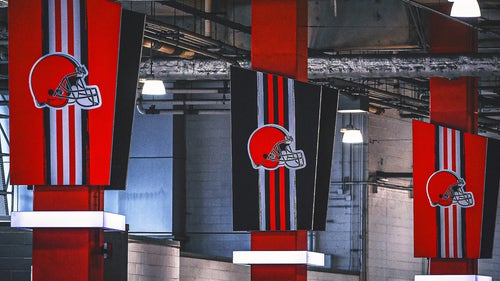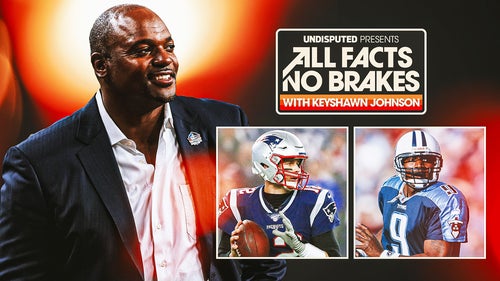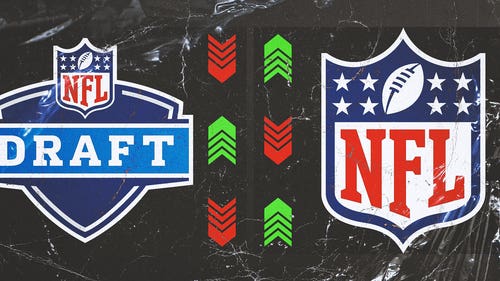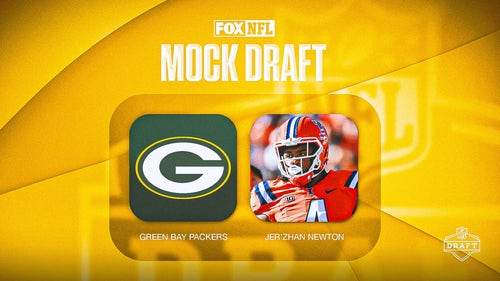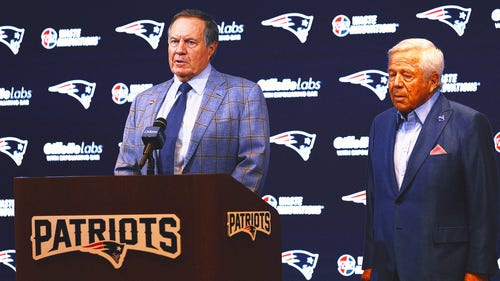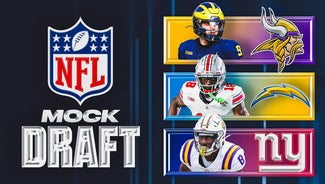
Week 12 controversial calls
Playing football is a challenge. So is officiating it.
There were two plays in two different games Sunday involving loose balls that were recovered by the opposing teams. One could have been challenged, and in my opinion, would have been reversed if it had been. The other one was just a mistake that is not reviewable in replay.
It both cases — during the Arizona-St. Louis and Buffalo-NY Jets games — the teams that recovered the loose balls went on to score go-ahead touchdowns. In one game it ended up not being significant, but in the other, it could have been the difference in the game.
Let’s take a look at both plays.
In the Arizona-St. Louis game, here was the situation: St. Louis had the ball, third-and-9 at the St. Louis 28-yard line with 8:53 left in the third quarter. The Rams led 10-6. Rams quarterback Sam Bradford completed a 1-yard pass to Lance Kendricks to the St. Louis 29-yard line before the latter fumbled. It was recovered by Arizona’s Sam Acho at the 28-yard line.
Recovery of a loose ball at the sideline is reviewable. The question was whether Acho got possession of the ball before his feet touched out of bounds.
In my opinion, he did not. Much like completing the catch, you have to maintain control of the ball after hitting the ground in order to legally recover a fumble.
It looked briefly as if Acho had control, but the ball then slid under his body and was loose when his feet were touching out of bounds.
I do believe if the Rams had challenged this play, they would have retained possession of the ball. It would have been fourth down and the Rams could have punted. Instead, the Cardinals got the ball at the 28-yard line and the Cardinals scored the go-ahead touchdown six plays later.
Arizona ended up winning the game, 23-20.
In the Buffalo-NY Jets game, here was the situation: The Bills had the ball, fourth-and-2 at the Buffalo 33-yard line with 2:25 left in the third quarter. The Jets led 21-14.
Buffalo’s Brian Moorman punted the ball 36 yards to the Jets’ 31-yard line. The Jets’ Antonio Cromartie signaled for a fair catch and muffed the punt. The ball was recovered by Buffalo’s Leodis McKelvin at the Jets’ 36-yard line.
Had the Jets lost this game, there would have been loud screams coming from New York. Many of my Twitter followers sent me tweets saying the whistle was blown after the muff and before the recovery.
When I went back and looked at the play, they were exactly right. An official tweeted, no pun intended, his whistle and unfortunately, did not report it to the referee. This becomes an inadvertent whistle, and by rule, the down should have been replayed.
Compounding the mistake — and the failure to live up to it — the Bills scored a touchdown on the very next play, a Ryan Fitzpatrick 36-yard pass to Brad Smith.
The Bills ended up losing the game anyway, 28-24.
Let’s take a look at some of the other interesting calls on Sunday:
THE GAME: Chicago at Oakland
THE SITUATION: Chicago had the ball, second-and-1 from the Oakland 7-yard line with 35 seconds left in the second quarter. Oakland led 9-7.
THE PLAY: Bears quarterback Caleb Hanie’s pass intended for Matt Forte was intercepted by Kamerion Wimbley at the Oakland 15-yard line and returned 73 yards to the Chicago 12-yard line. Chicago’s Lance Louis was called for a horse collar and the penalty was enforced.
MY TAKE: This is a horse collar and I would expect this to be called 100 percent of the time. The rule says you are not allowed to tackle the runner by grabbing inside the collar or shoulder pad of the runner and pulling him to the ground.
It makes no difference that Wimbley already was headed to the end zone and Louis, in desperation, grabbed him by the collar and pulled him down. It also makes no difference that he might have been just below the collar, as the officials are told to call this foul if it is close.
It is fair to argue whether the rule is a good one or not, but it isn’t fair to bring criticism upon the officials for doing their job the way they are told to do it. They are criticized enough as it is.
THE GAME: Tampa Bay at Tennessee
THE SITUATION: Tampa Bay had the ball, second-and-17 from the Tampa Bay 45-yard line with 7:17 left in the second quarter. Tennessee led 7-3.
THE PLAY: Bucs quarterback Josh Freeman dropped back to pass and fumbled the ball. It was recovered by Tennessee’s Dave Ball.
MY TAKE: My Twitter crew wrote in and wanted to know why this wasn’t a tuck play. Here’s the reason why it wasn’t.
Rule 3, Section 22, Article 2 (note 3) states: "If the passer loses possession of the ball while attempting to re-cock his arm, it is a fumble."
If the ball comes out, as the quarterback is tucking the ball back towards his body, it is an incomplete pass, whether the ball comes out on its own or is knocked out by a defender. However, after a passer has completed his tucking motion and is bringing his arm back up in an attempt to throw a forward pass, it is a fumble if the ball comes loose.
THE GAME: Arizona at St. Louis
THE SITUATION: Arizona had the ball, fourth-and-10 from the Arizona 24-yard line with 4:27 left in the first quarter. St. Louis led 7-0.
THE PLAY: Cardinals punter Dave Zatstudil punted the ball 51 yards to the St. Louis 25-yard line.
MY TAKE: My Twitter crew, almost 30,000 strong now, is incredible. My game monitor in the studio did not even pick up the fact that a Rams defender went out of bounds and blocked an Arizona kicking team member (the gunner).
Rule 12, Section 2, Article 8 (note c) states: ``A member of the receiving team cannot go out of bounds and contact a kicking team player out of bounds.’’ If the personal foul (unnecessary roughness) would have been called, it would have been enforced from the end of the kick, since it occurred during the kick. St. Louis would have penalized half the distance to the goal.
THE GAME: Tampa Bay at Tennessee
THE SITUATION: Tampa Bay had the ball, third-and-3 at the Tampa Bay 39-yard line with 8:23 left in the second quarter. Tennessee led 7-3.
THE PLAY: Bucs quarterback Josh Freeman completed a 13-yard pass to Kellen Winslow. A offside penalty was called on Tennessee’s Derrick Morgan and it was declined. Tennessee challenged the pass completion ruling, and the play was upheld.
MY TAKE: FOX Sports’ John Lynch, who was calling the game, and I both wondered why this was challenged. The defense was called for being offside -- and even if this play was reversed – the penalty would have been enforced and the Bucs would have been given a first down.
So Tennessee wasted a challenge over an 8-yard difference, because even if the Titans won the challenge, the Bucs would have gotten a first down because of the penalty.
THE GAME: Cleveland at Cincinnati
THE SITUATION: Cleveland had the ball, third-and-3 from the Cleveland 8-yard line with 2:05 left in the first quarter. Cleveland led 7-0.
THE PLAY: Browns quarterback Colt McCoy carried the ball three yards for a first down. Cincinnati challenged the first down ruling, and the play was reversed.
MY TAKE: If I was a coach, I would seldom challenge the spot where the ball crosses the sideline. It is so difficult to get a precise spot in replay; therefore, most of the time the ruling on the field stands.
In this case, however, you could clearly see that the ball crossed the sideline at the 10-yard line when the McCoy’s foot came down on the 11. That’s the most important point on this play.







































































































































